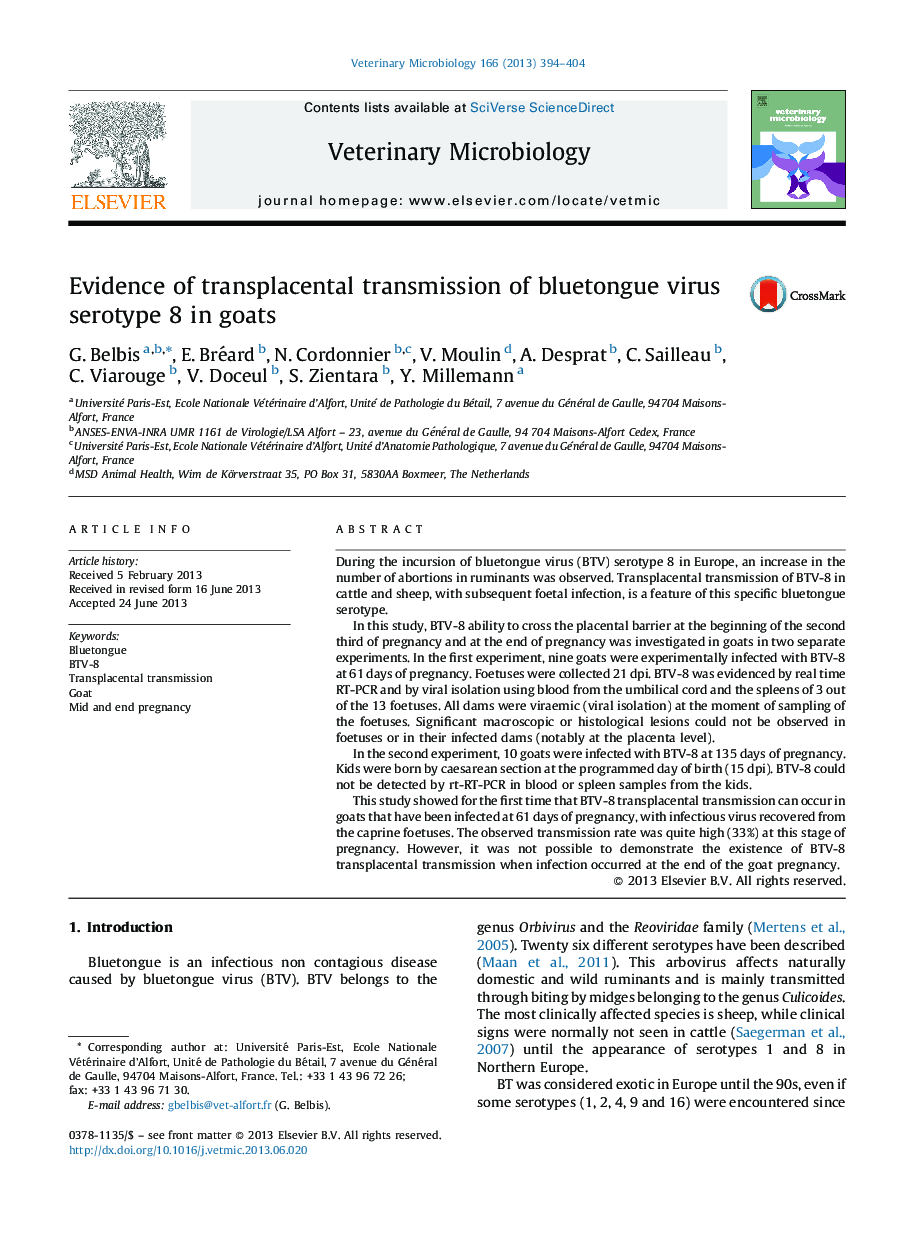| Article ID | Journal | Published Year | Pages | File Type |
|---|---|---|---|---|
| 5801150 | Veterinary Microbiology | 2013 | 11 Pages |
During the incursion of bluetongue virus (BTV) serotype 8 in Europe, an increase in the number of abortions in ruminants was observed. Transplacental transmission of BTV-8 in cattle and sheep, with subsequent foetal infection, is a feature of this specific bluetongue serotype.In this study, BTV-8 ability to cross the placental barrier at the beginning of the second third of pregnancy and at the end of pregnancy was investigated in goats in two separate experiments. In the first experiment, nine goats were experimentally infected with BTV-8 at 61 days of pregnancy. Foetuses were collected 21Â dpi. BTV-8 was evidenced by real time RT-PCR and by viral isolation using blood from the umbilical cord and the spleens of 3 out of the 13 foetuses. All dams were viraemic (viral isolation) at the moment of sampling of the foetuses. Significant macroscopic or histological lesions could not be observed in foetuses or in their infected dams (notably at the placenta level).In the second experiment, 10 goats were infected with BTV-8 at 135 days of pregnancy. Kids were born by caesarean section at the programmed day of birth (15Â dpi). BTV-8 could not be detected by rt-RT-PCR in blood or spleen samples from the kids.This study showed for the first time that BTV-8 transplacental transmission can occur in goats that have been infected at 61 days of pregnancy, with infectious virus recovered from the caprine foetuses. The observed transmission rate was quite high (33%) at this stage of pregnancy. However, it was not possible to demonstrate the existence of BTV-8 transplacental transmission when infection occurred at the end of the goat pregnancy.
